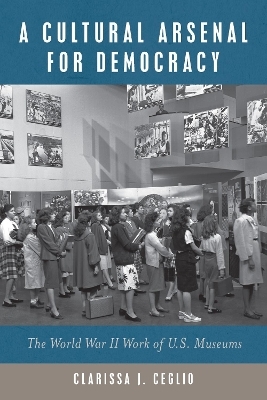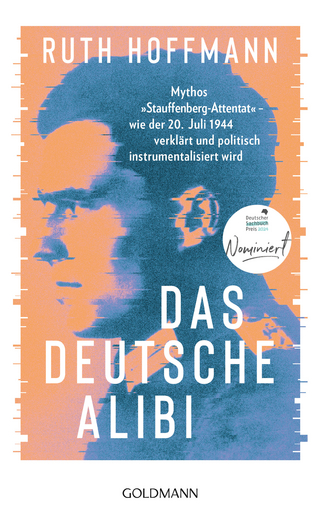
A Cultural Arsenal for Democracy
The World War II Work of U.S. Museums
Seiten
2022
University of Massachusetts Press (Verlag)
978-1-62534-625-4 (ISBN)
University of Massachusetts Press (Verlag)
978-1-62534-625-4 (ISBN)
Chronicles debates, experiments, and collaborations from the 1930s to the immediate postwar years, investigating how museums re-envisioned the exhibition as a narrative medium and attempted to reconcile their mission with new modes of storytelling.
Does it seem strange to think of a museum as a weapon in national defense?" asked John Hay Whitney, president of the Museum of Modern Art, in June 1941. As the United States entered the Second World War in the months to follow, this idea seemed far from strange to museums. Working to strike the right balance between education and patriotism, and hoping to attain greater relevance, many American museums saw engagement with wartime concerns as consistent with their vision of the museum as a social instrument.
Unsurprisingly, exhibitions served as the primary vehicle through which museums, large and small, engaged their publics with wartime topics with fare ranging from displays on the cultures of Allied nations to "living maps" that charted troop movements and exhibits on war preparedness. Clarissa J. Ceglio chronicles debates, experiments, and collaborations from the 1930s to the immediate postwar years, investigating how museums re-envisioned the exhibition as a narrative medium and attempted to reconcile their mission with new modes of storytelling.
Does it seem strange to think of a museum as a weapon in national defense?" asked John Hay Whitney, president of the Museum of Modern Art, in June 1941. As the United States entered the Second World War in the months to follow, this idea seemed far from strange to museums. Working to strike the right balance between education and patriotism, and hoping to attain greater relevance, many American museums saw engagement with wartime concerns as consistent with their vision of the museum as a social instrument.
Unsurprisingly, exhibitions served as the primary vehicle through which museums, large and small, engaged their publics with wartime topics with fare ranging from displays on the cultures of Allied nations to "living maps" that charted troop movements and exhibits on war preparedness. Clarissa J. Ceglio chronicles debates, experiments, and collaborations from the 1930s to the immediate postwar years, investigating how museums re-envisioned the exhibition as a narrative medium and attempted to reconcile their mission with new modes of storytelling.
CLARISSA J. CEGLIO is assistant professor of digital humanities at the University of Connecticut.
| Erscheinungsdatum | 31.01.2022 |
|---|---|
| Reihe/Serie | Public History in Historical Perspective |
| Verlagsort | Massachusetts |
| Sprache | englisch |
| Maße | 152 x 229 mm |
| Gewicht | 307 g |
| Themenwelt | Kunst / Musik / Theater ► Allgemeines / Lexika |
| Geschichte ► Allgemeine Geschichte ► 1918 bis 1945 | |
| Geisteswissenschaften ► Geschichte ► Hilfswissenschaften | |
| Geisteswissenschaften ► Geschichte ► Regional- / Ländergeschichte | |
| Geschichte ► Teilgebiete der Geschichte ► Militärgeschichte | |
| ISBN-10 | 1-62534-625-5 / 1625346255 |
| ISBN-13 | 978-1-62534-625-4 / 9781625346254 |
| Zustand | Neuware |
| Haben Sie eine Frage zum Produkt? |
Mehr entdecken
aus dem Bereich
aus dem Bereich
ein Psychologe erlebt das Konzentrationslager
Buch | Hardcover (2024)
Kösel (Verlag)
22,00 €
Mythos „Stauffenberg-Attentat“ – wie der 20. Juli 1944 verklärt und …
Buch | Hardcover (2024)
Goldmann (Verlag)
24,00 €


